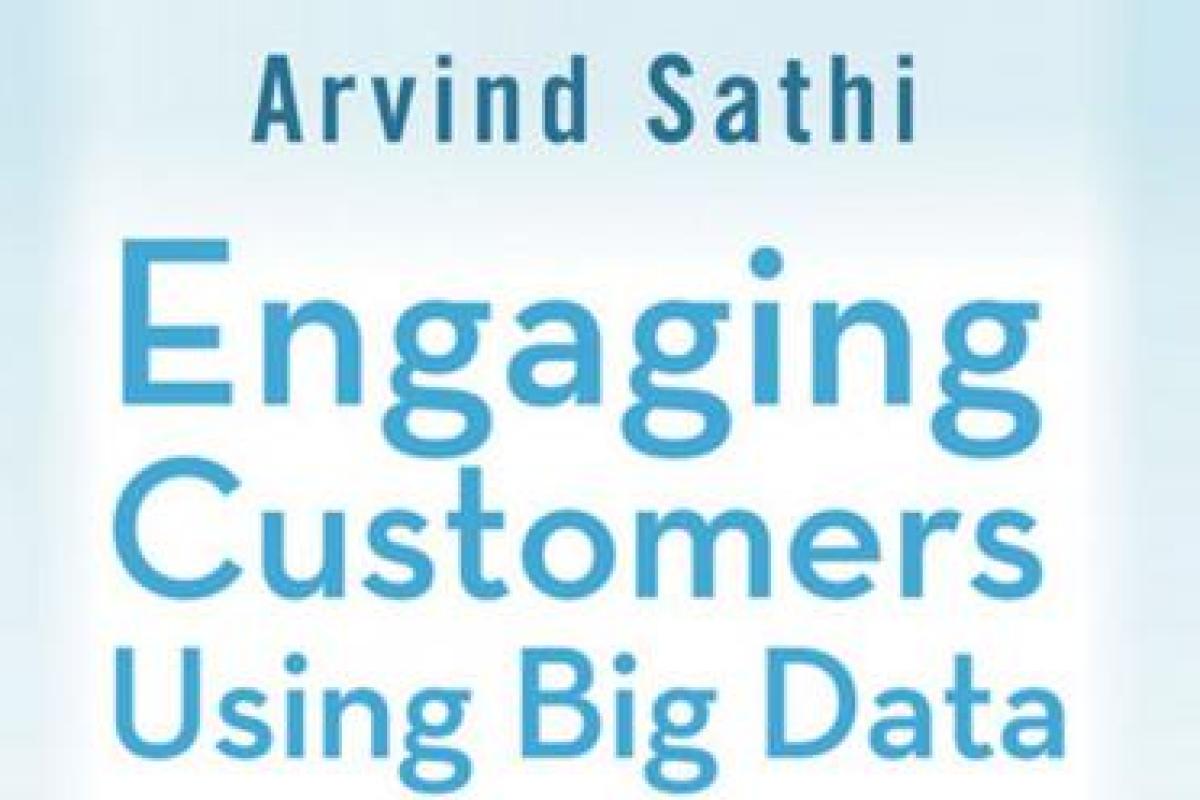These days, Big Data seems to need no justification, the benefits are simply assumed. Refreshingly, this author provided numerous examples of the how Big Data is changing the marketing landscape.
Sathi aims his book at marketing professionals, those who sell technology solutions, and academics. He is the World Wide Communication Senior Architect for Big Data at IBM, with a background in marketing analytics mainly with telcos, media content owners, retailers and utilities. He has knocked on doors to collect data, and designed analytical systems. With that experience, he is a credible guide to the state-of-the-art.
He lays out the evidence for how new data sources are providing an ever more granular view on customers, and how marketing can apply that to target customers in a precise and individualised way.
The first half of Engaging Customers contains cases - spanning a range of industries - to illustrate how Big Data can transform marketing. These case examples are chosen to support 3 propositions specified by the author: -
- that data now available from populations is superior to sampled data - requiring less sophisticated techniques and producing more accurate results
- that customers can now be addressed as individuals or micro-segments using highly targeted personalised communications
- and that orchestration engines can now precisely tune all aspects of the marketing effort at the level of the individual based a wide understanding of a particular customer’s needs, intentions, and relationships.
The author’s sources come from his own experience working in the field, his personal experience as a consumer, the experience of work colleagues, and a wide variety of online sources including white papers, blogs, and discussion groups. (There is a preponderance of IBM-related examples). At the same time, the personal approach is put to good use: he is able to describe his own frustration at inept mass-marketing efforts as an introduction to the better, more targeted communications that Big Data enables. For example, brands can target messages specifically at people working from home based on location data from mobile phones.
In the second half of the book, the author deals with wider issues, some of which are obvious, and some less so. The control of Privacy by government and customers’ own declared preferences will be a familiar one. More interesting is the issue of identity resolution and how entity analytics can be applied to large data sets from multiple origins in order to pin down all of the events anywhere in the data that all belong to a particular person, or to people who are connected, say, by being at the same address. Not surprisingly, entity analytics is being polished to perfection by gambling websites.
At the moment, Big Data is still relatively new and Sathi points out the need for careful management to ensure its accuracy, or ETL (extract, transform, and load) to pre-process data to make it tractable.
Sathi also does a good job of outlining how individualised automated marketing can provide the customer with, for example, exactly the right promotion and at exactly the right time by combining information collected online and current location data.
The examples used in Engaging Customers are biased towards established internet businesses such as Amazon, LinkedIn, Facebook, Verizon, Netflix, and Google. These companies are pioneers in Big Data and have good access to customer history and website click-through information. But Sathi also provides suggestions for established offline businesses linking with customers through mobile apps.
Sathi believes that Big Data makes a difference to marketing information because it deals with populations rather than samples. He insists,
“For decades, statisticians build processes that worked well on random samples of real data. We now have real data. There are no more samples.”
We disagree. Properly taken samples produce results to within a few percent of the world being sampled, and a mere few percent of increased precision does not account for the revolution now taking place. At opento, we believe that the benefit is not about more precise averages. Instead it’s about being able to intimately understand the consumers’ psychology via behaviours – enabling real-time, responsive, personalised marketing.
In the future, there will be more data and it will travel faster and work harder. The author forecasts a future where marketers use analytics to enable the holy grail of mass customization. However, the barrier to mass customization is less about data on preferences and more about flexible business models to respond to those preferences. We are still very early on that road.
Sandra Pickering is Founding Partner of opento.com, specialising in applying neuroscience to brand strategy and all aspects of brand-building. Paul Pickering is Technology Partner of opento.com, specialising in applying data science to business and marketing problems.
Join our Book Club. If you're a member of The Marketing Society we'd love you to write a 300-word review for our Clubhouse. Or if you're an author get in touch. We've got lots of members keen to review your book. Contact Michael Piggott to find out more.
